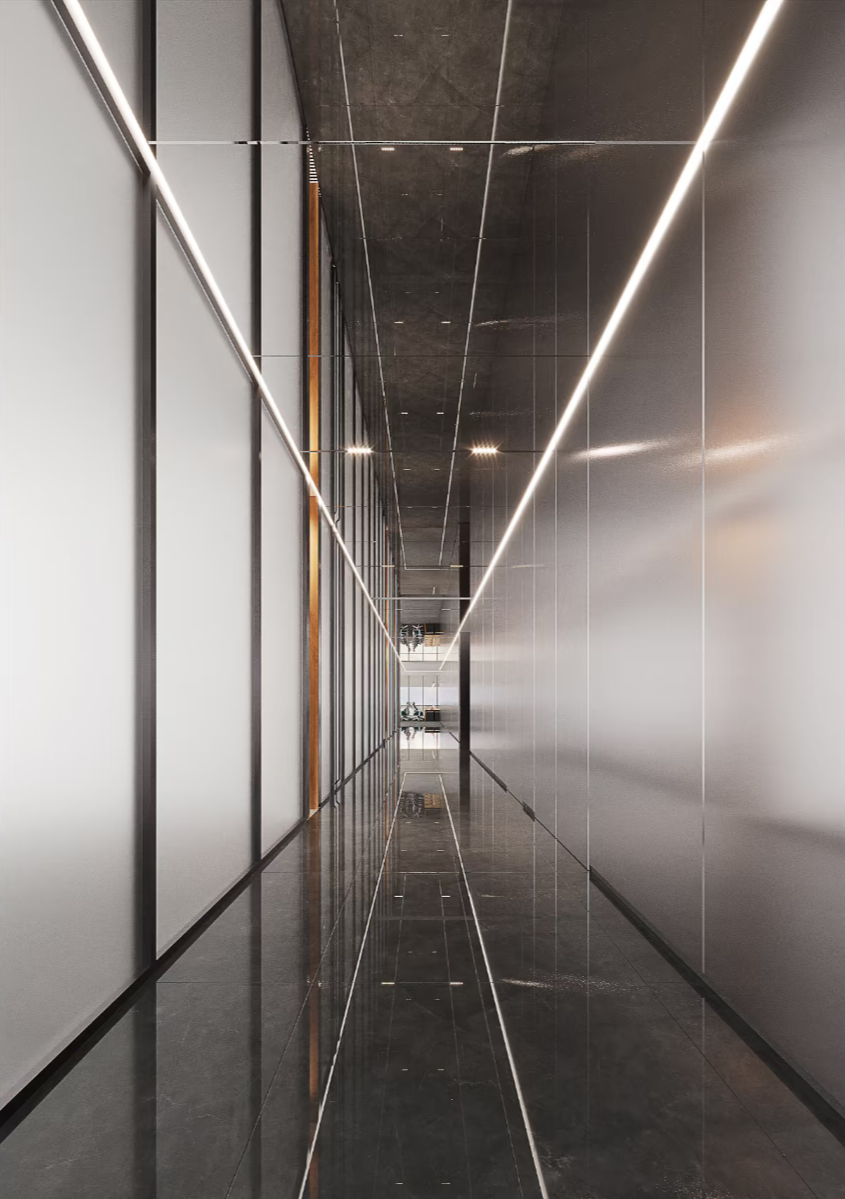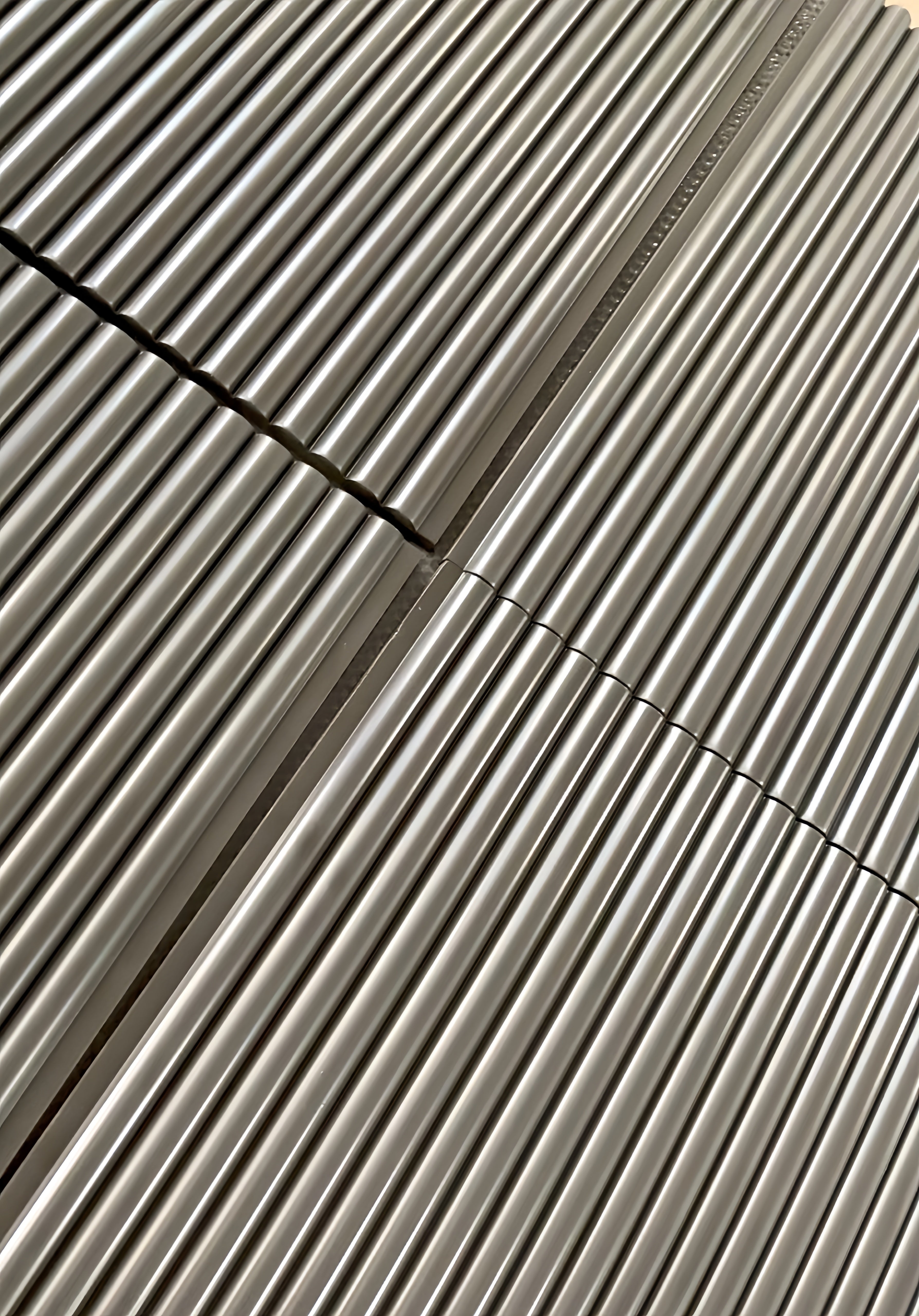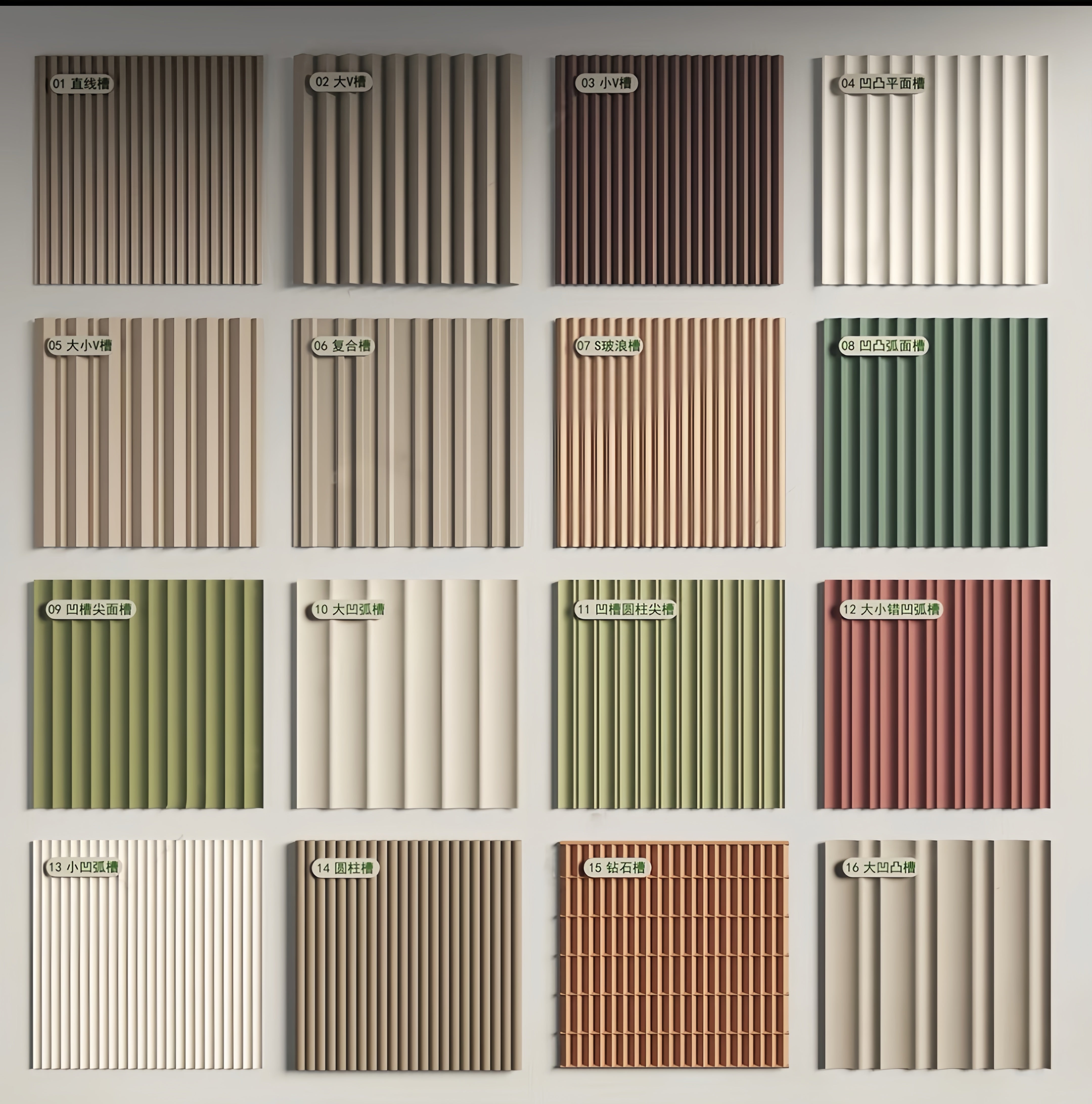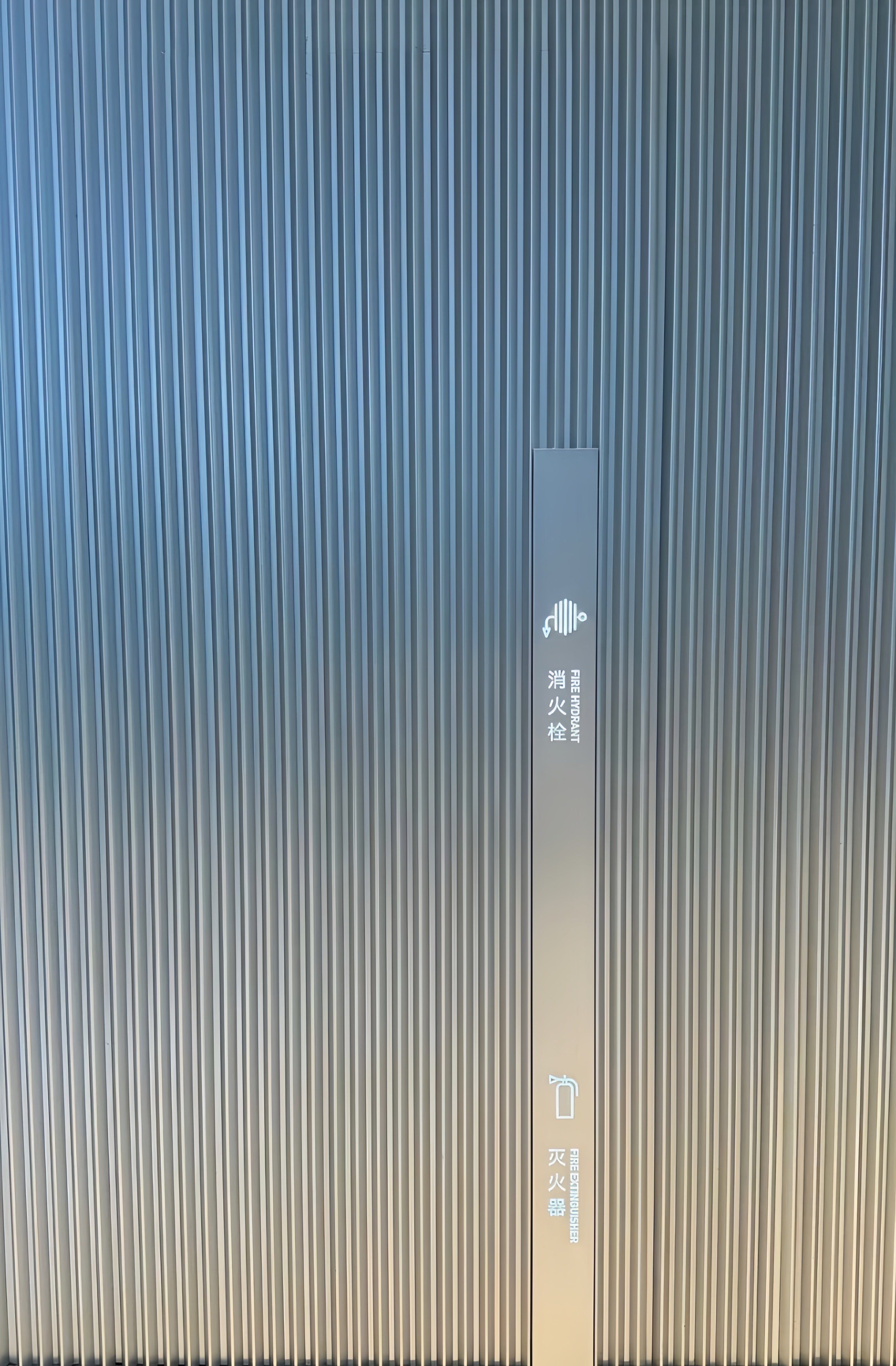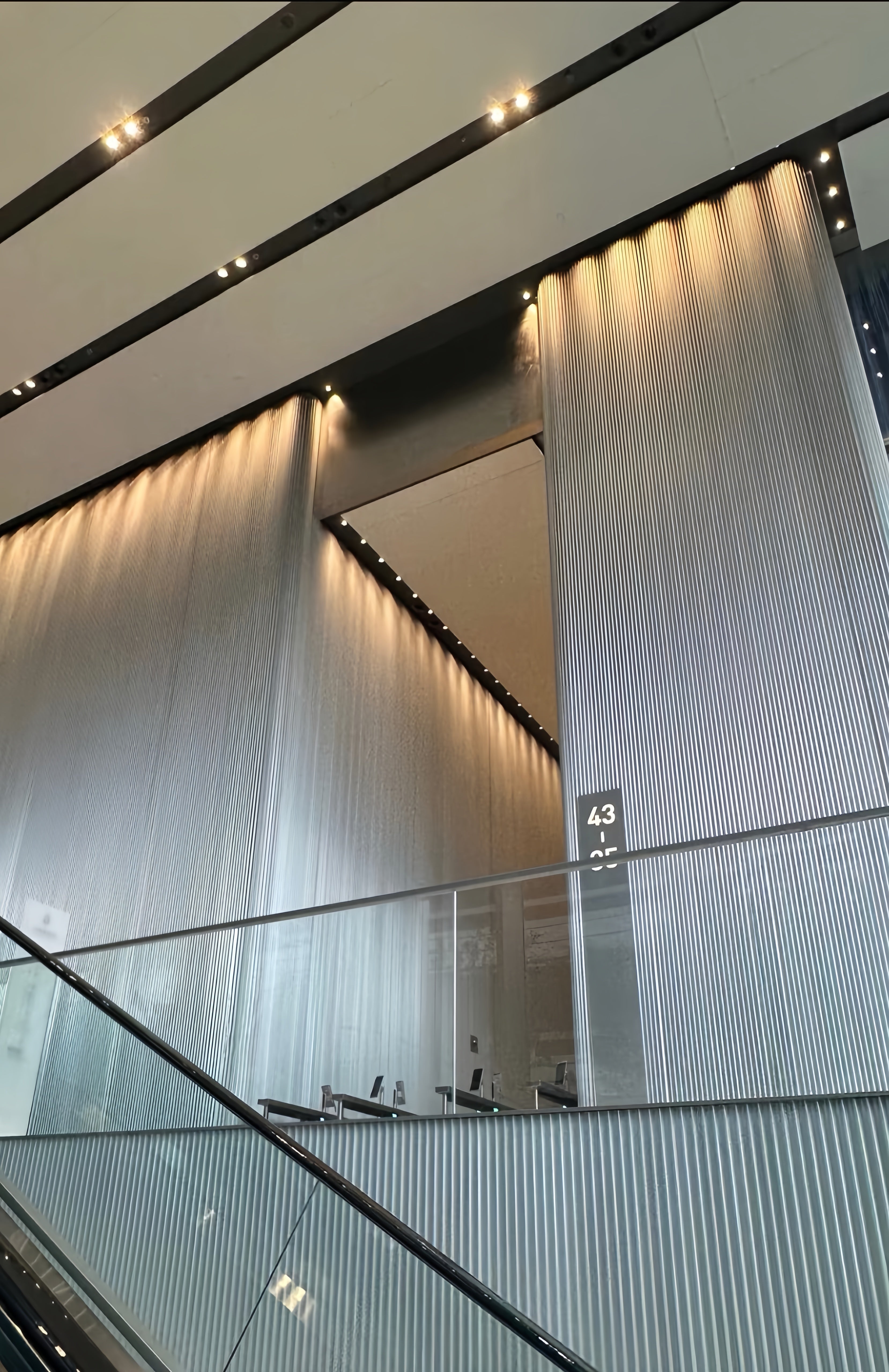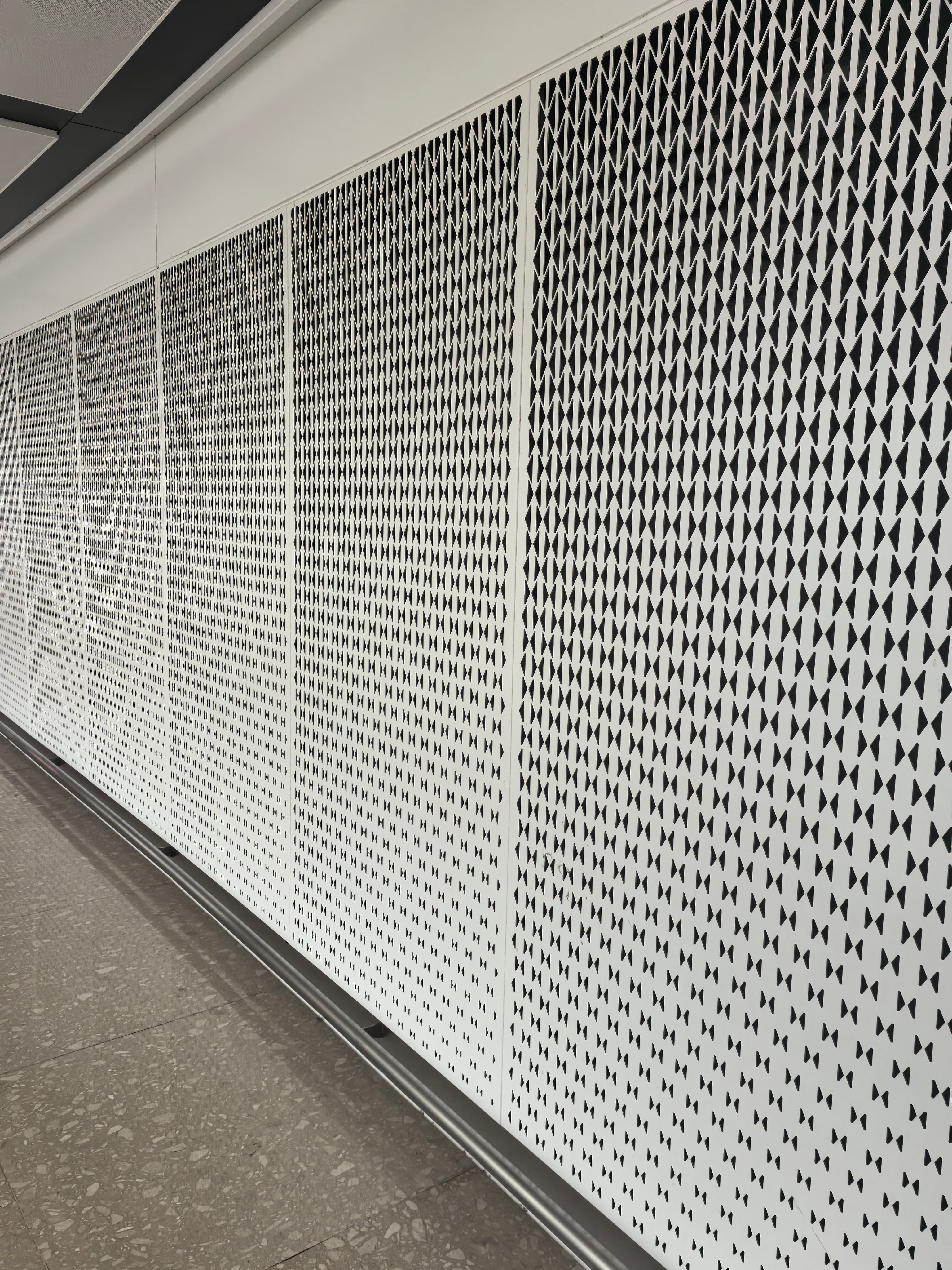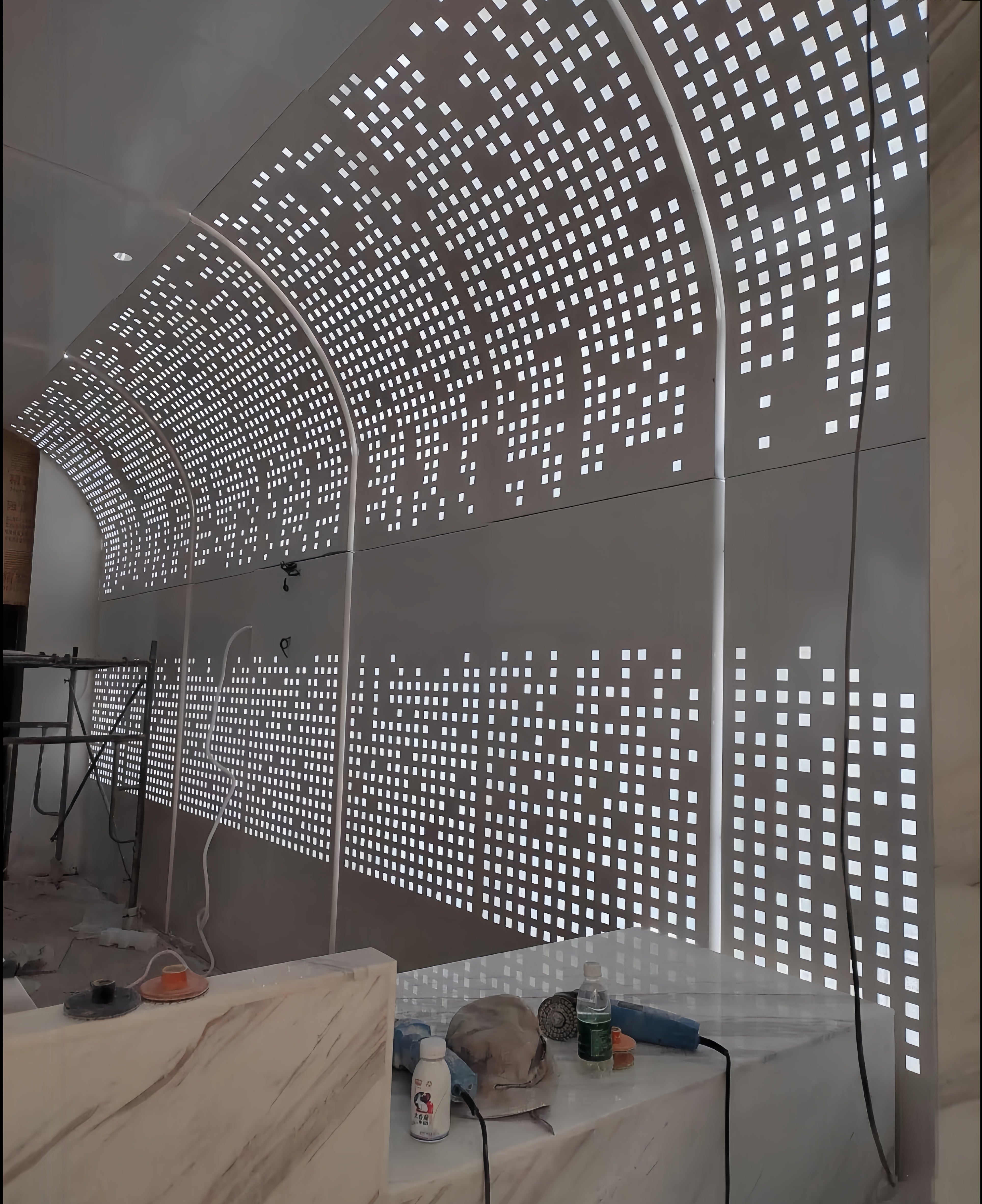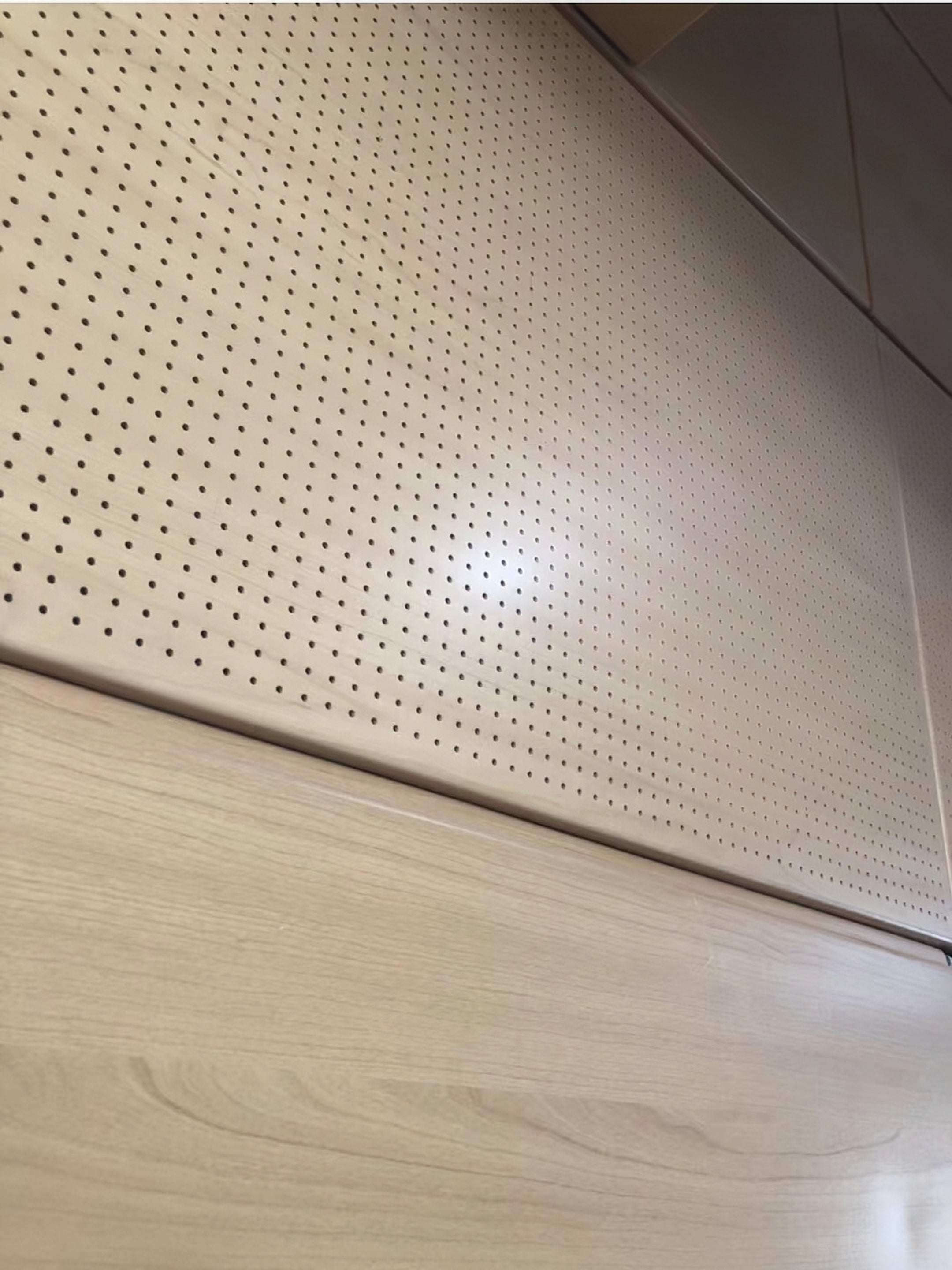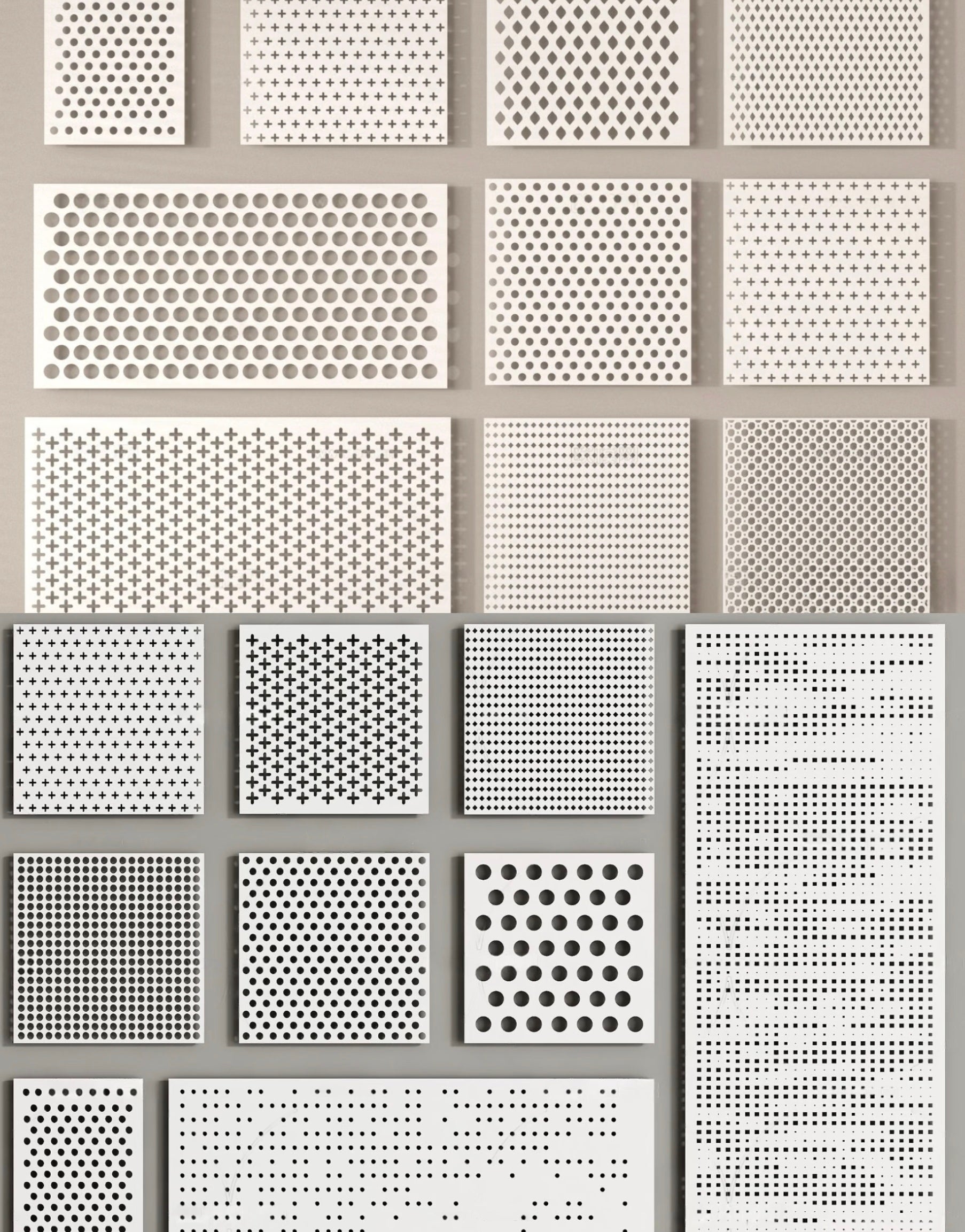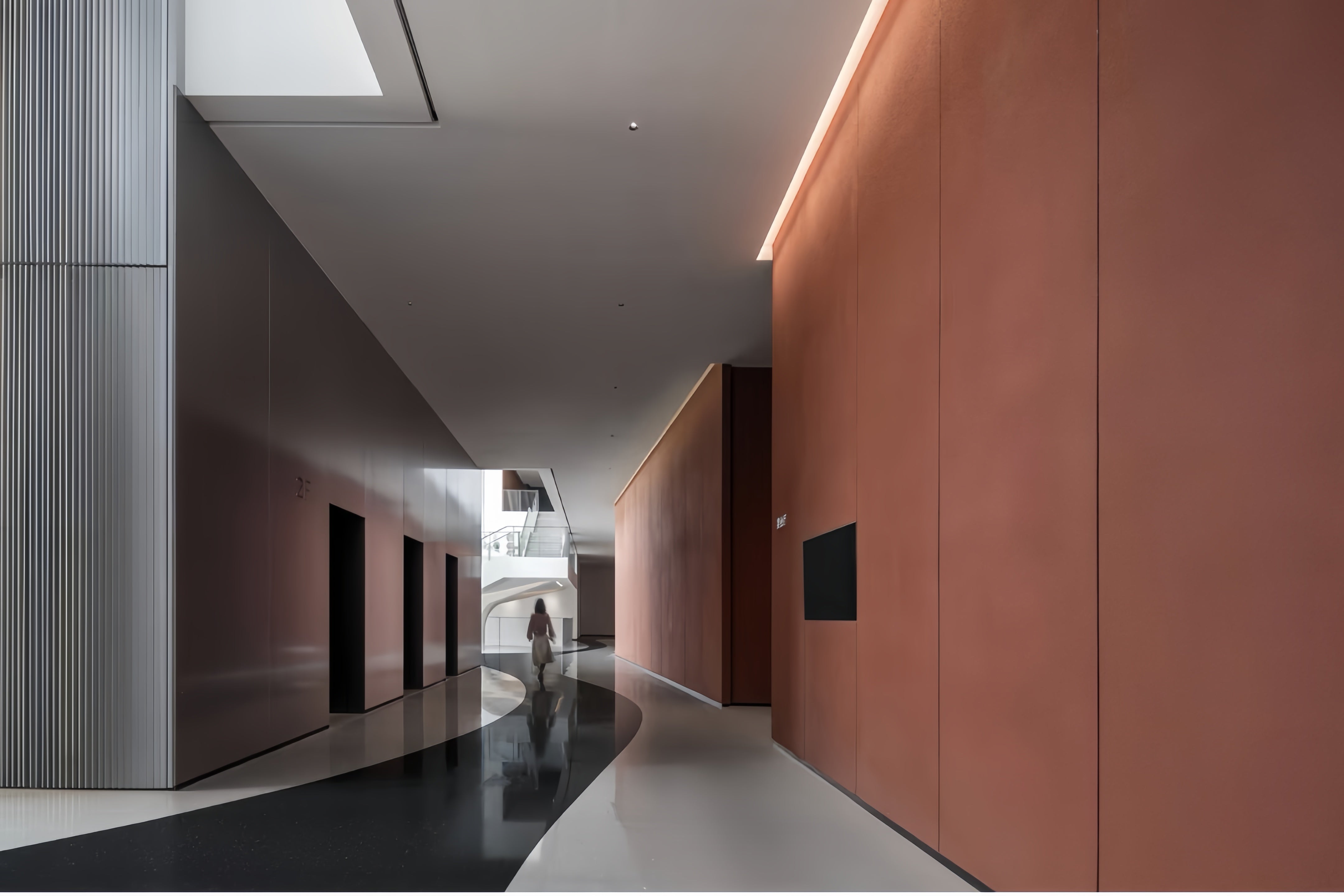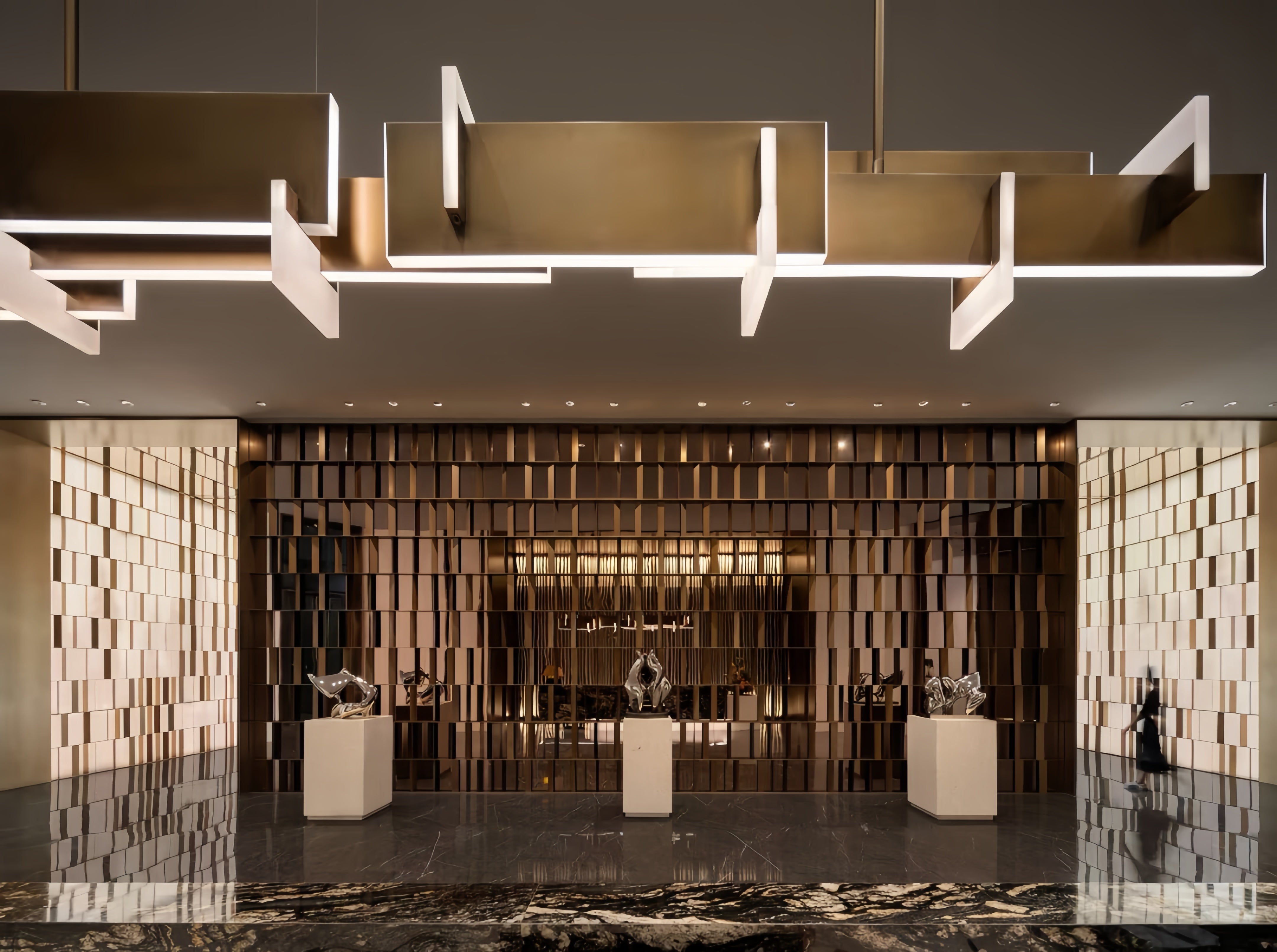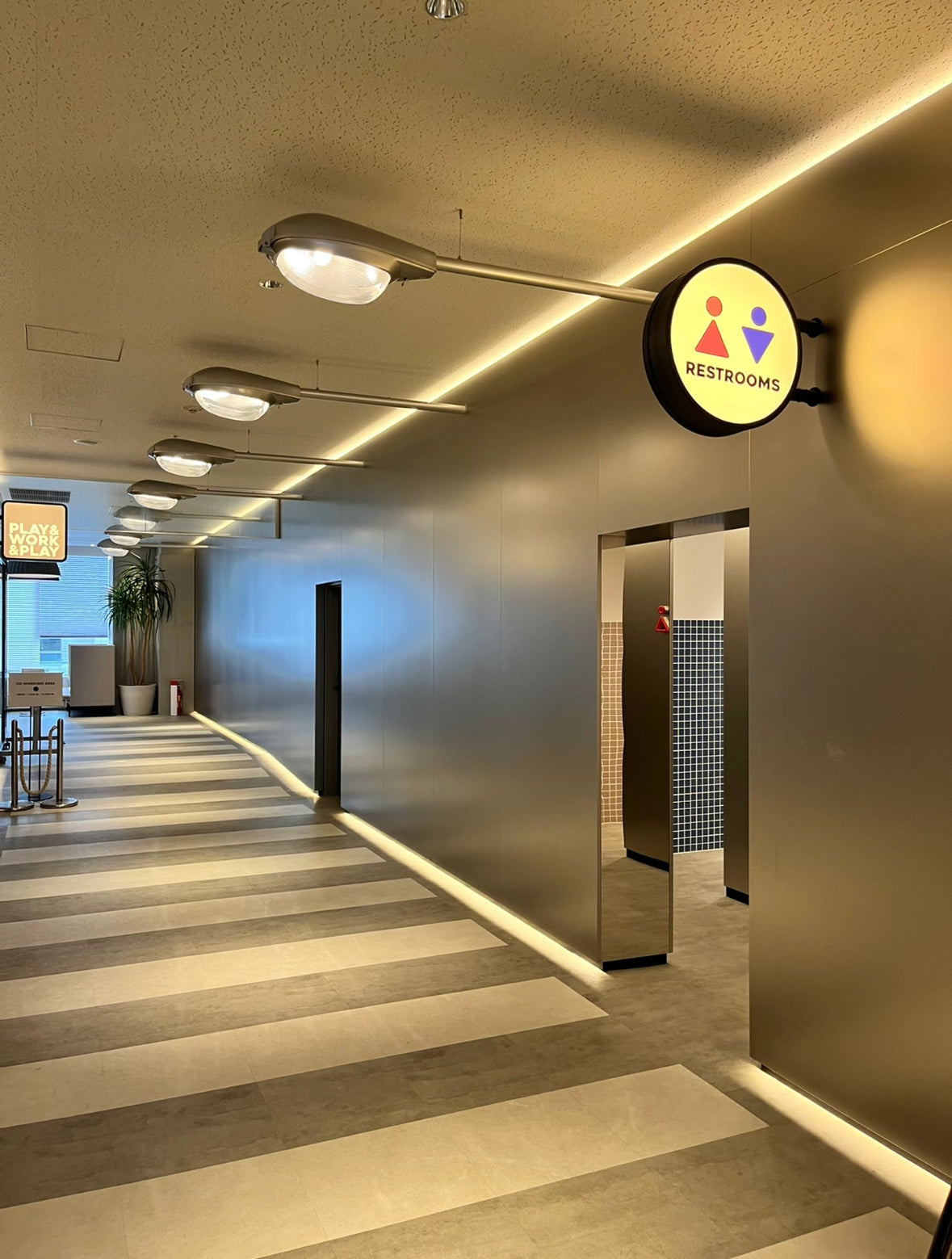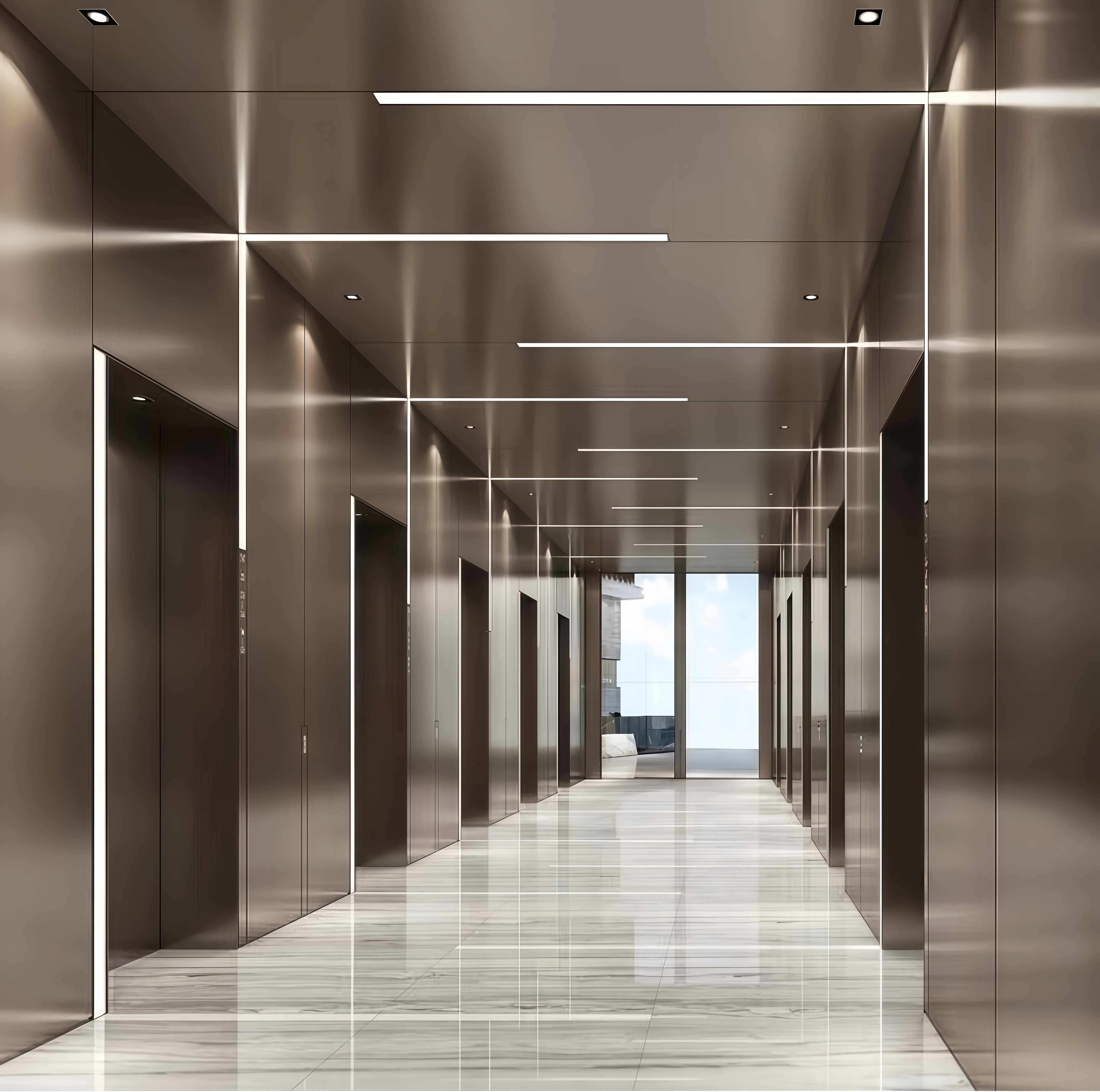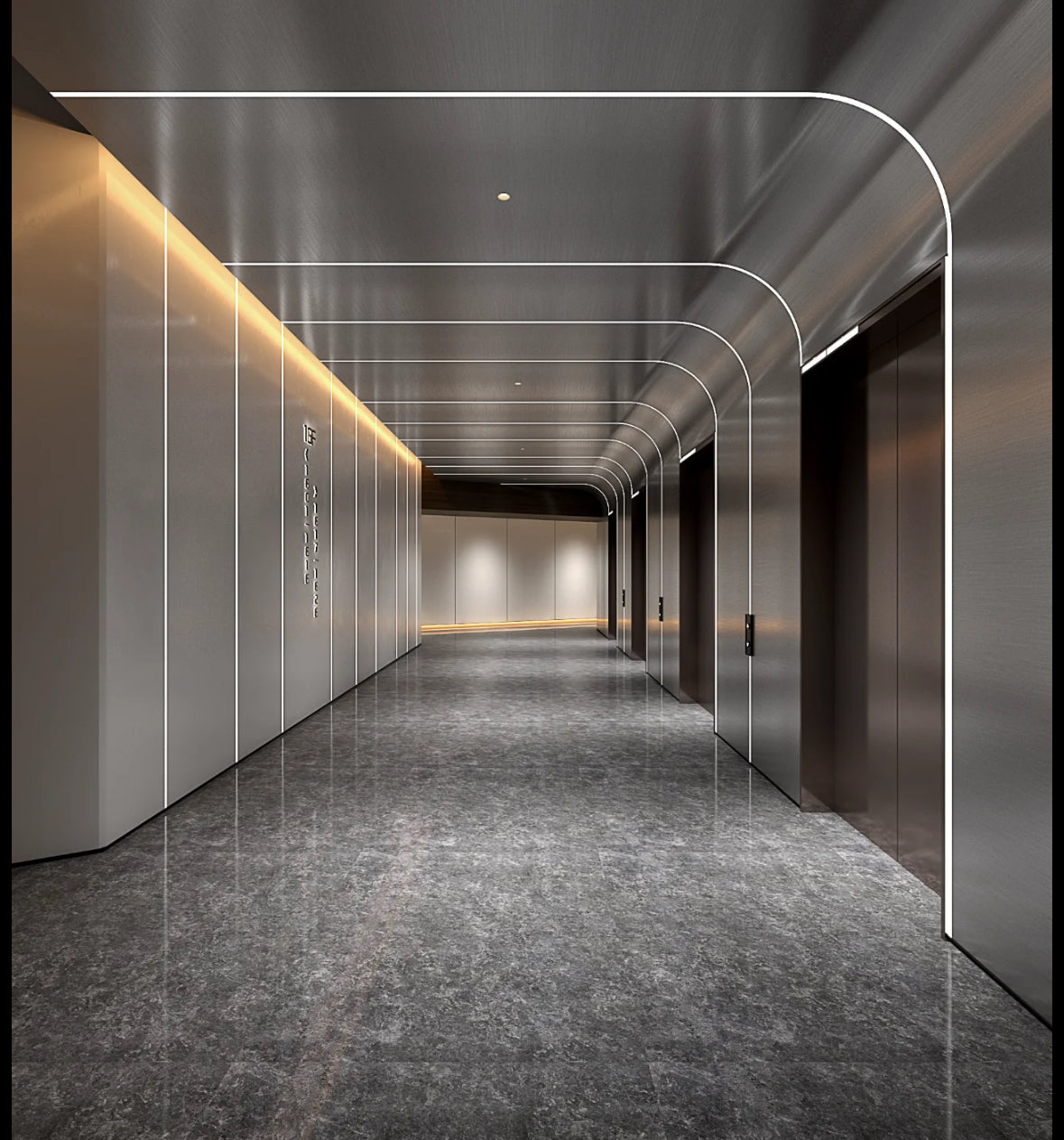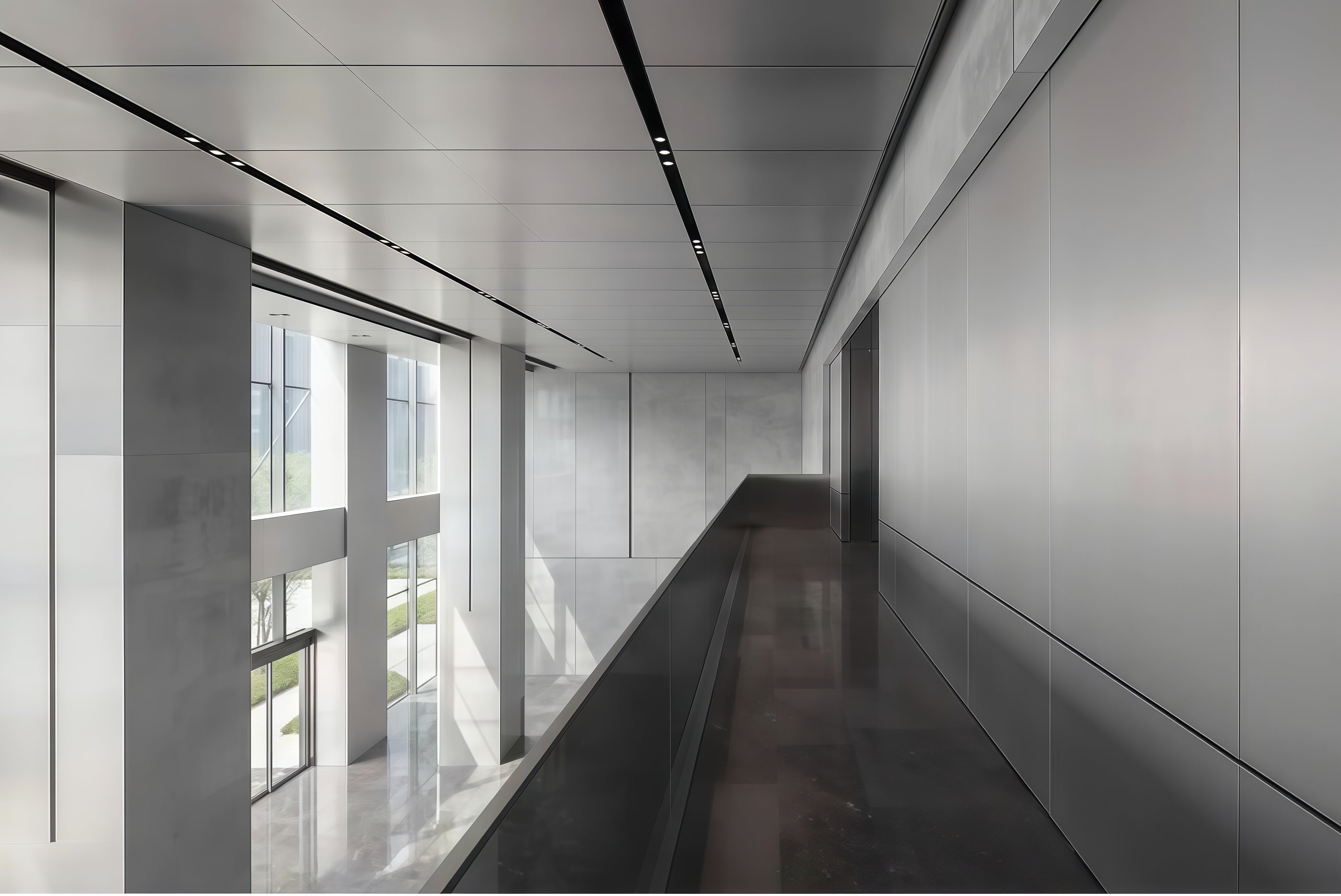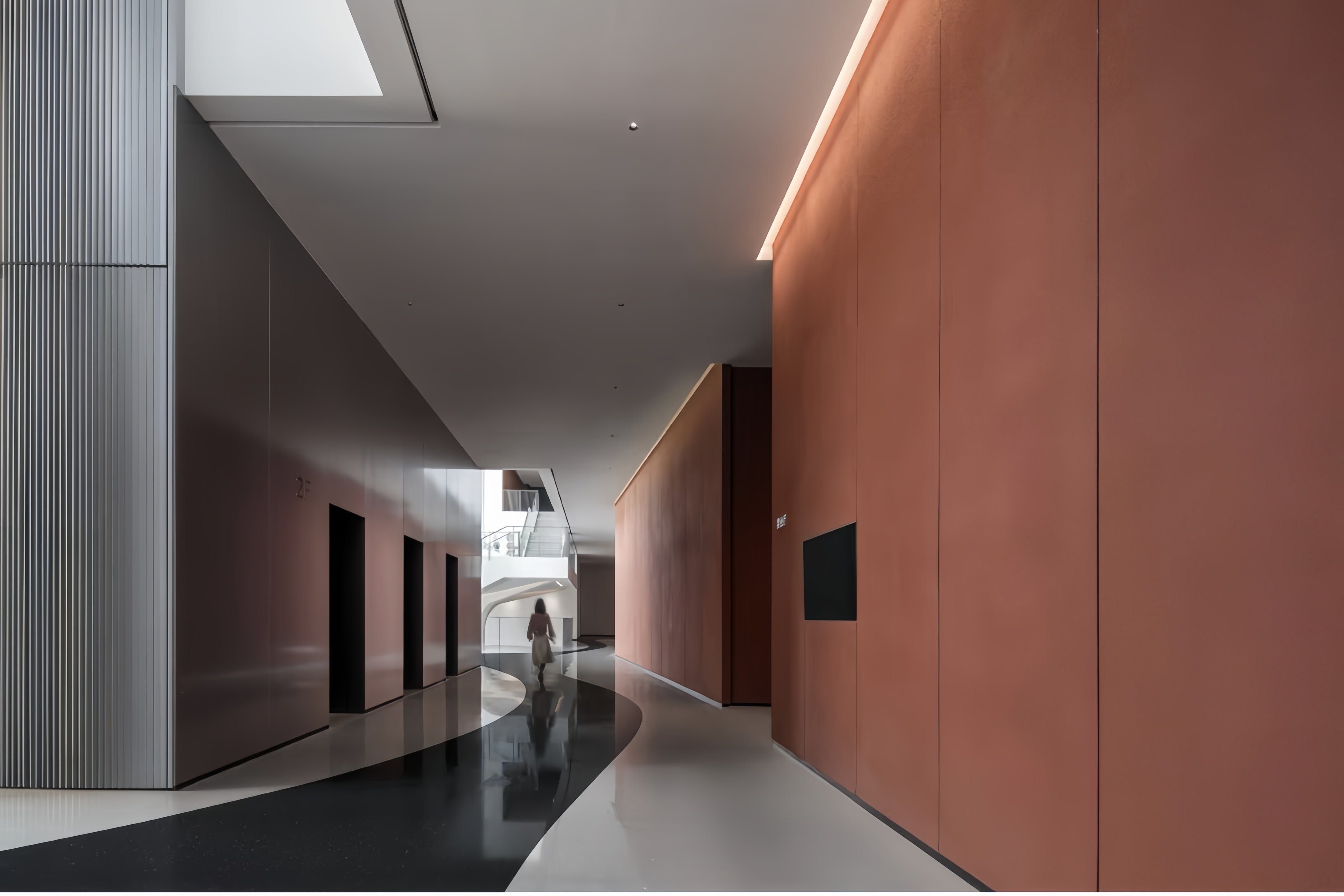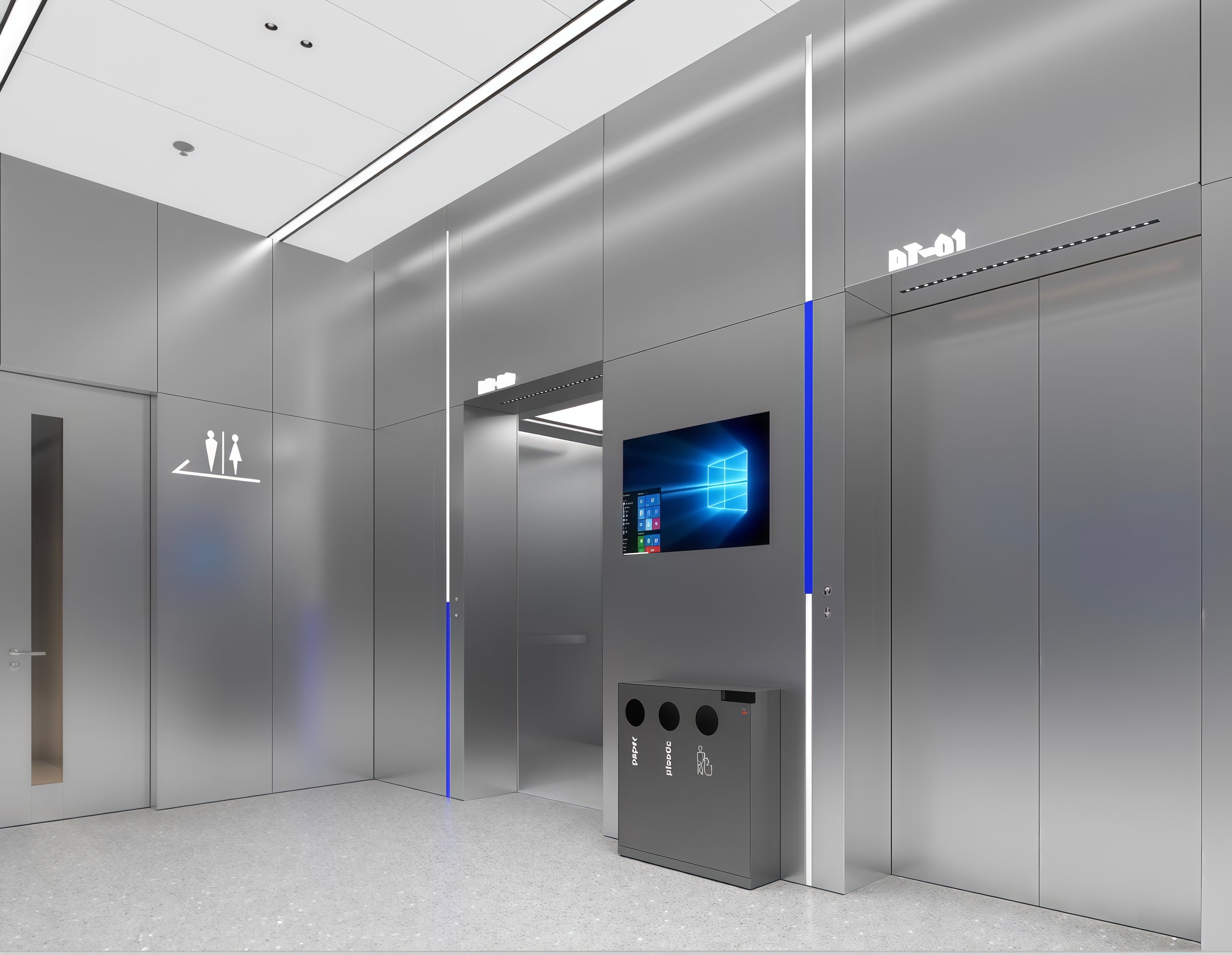FAQs
1. What are interior wall panels and what materials does ANSUS offer for interior applications?
Interior wall panels are decorative and functional wall covering systems designed to enhance interior spaces while providing superior performance compared to traditional materials like drywall or wood paneling. ANSUS specializes in premium metal interior wall panels that combine aesthetic excellence with exceptional durability.
Our Interior Wall Panel Materials:
Aluminum Interior Panels:
- 1100 Series Aluminum: Pure aluminum for maximum corrosion resistance in humid environments
- 3003 Series Aluminum: Enhanced strength for high-traffic commercial applications
- 5052 Series Aluminum: Premium grade for luxury installations and marine environments
- Thickness Options: 0.8mm to 3.0mm depending on application requirements
Stainless Steel Interior Panels:
- 304 Stainless Steel: Standard grade for most interior applications
- 316L Stainless Steel: Marine grade for kitchens, bathrooms, and coastal properties
- Brushed Finishes: Contemporary matte appearance hiding fingerprints
- Mirror Finishes: High-gloss surfaces for luxury applications
Surface Treatment Options:
- PVDF Coatings: 20+ year warranty with unlimited color options and wood-grain finishes
- Powder Coatings: Durable, cost-effective finishes in 200+ standard colors
- Anodized Finishes: Natural aluminum protection with architectural color options
- PVD Ti-Coatings: Luxury metallic finishes including gold, bronze, black, and rose gold
- Wood-Grain Textures: Realistic wood appearance with metal durability and fire safety
Key Applications:
- Hotel lobbies and guest rooms
- Corporate offices and conference rooms
- Retail stores and showrooms
- Healthcare facilities and clean rooms
- Residential luxury interiors
- Restaurant and hospitality interiors
Interior metal wall panels offer superior fire resistance, moisture resistance, easy maintenance, and design flexibility compared to traditional materials, making them ideal for both commercial and high-end residential applications.
2. How do interior metal wall panels compare to traditional drywall in terms of cost, durability, and maintenance?
Interior metal wall panels offer significant advantages over traditional drywall, especially when considering long-term value and performance:
Initial Cost Comparison (per square meter, installed):
- Standard Drywall with Paint: $25-40
- High-End Drywall with Premium Paint: $35-60
- Aluminum Interior Panels: $80-150
- Premium Metal Panels with PVDF: $120-250
- Luxury PVD Ti-Coated Panels: $200-400
Durability Advantages:
- Impact Resistance: Metal panels resist dents, scratches, and damage that easily affects drywall
- Moisture Resistance: Won't absorb water, preventing mold, mildew, and structural damage
- Fire Safety: Non-combustible materials exceeding building fire codes
- Dimensional Stability: No warping, cracking, or settling like drywall systems
- Lifespan: 25+ years vs. 10-15 years for drywall before repainting/replacement needed
Maintenance Comparison:
- Drywall Maintenance: Repainting every 5-7 years, repair of cracks and holes, potential mold remediation
- Metal Panel Maintenance: Annual cleaning with mild detergent, no repainting required
- Cleaning Ease: Smooth metal surfaces clean easily vs. textured drywall that traps dirt
- Damage Repair: Individual panels replaceable vs. entire wall section repairs for drywall
Long-Term Value Analysis (20 years):
- Drywall Total Cost: $80-160 (including 2-3 repaints, repairs, potential replacement)
- Metal Panels Total Cost: $80-400 (minimal maintenance, no replacement needed)
- Break-Even Point: Premium metal panels typically break even in 8-12 years
Performance Benefits:
- Hygiene: Non-porous surfaces ideal for healthcare and food service applications
- Acoustics: Better sound reflection and control options with perforated panels
- Thermal Performance: Metal panels can integrate with insulation systems
- Design Flexibility: Unlimited colors, textures, and custom patterns available
For high-traffic commercial spaces, luxury residential applications, or environments requiring superior hygiene and durability, interior metal wall panels provide excellent long-term value despite higher initial costs.
3. What are the best interior wall panel options for high-moisture environments like bathrooms, kitchens, and swimming pool areas?
High-moisture environments require specialized interior wall panel solutions that resist corrosion, prevent mold growth, and maintain appearance despite constant humidity exposure. ANSUS offers several optimal solutions:
Premium Material Recommendations:
316L Stainless Steel Panels:
- Corrosion Resistance: Superior performance in chlorinated pool environments
- Hygiene Benefits: Non-porous surface prevents bacterial growth
- Easy Cleaning: Compatible with strong disinfectants and cleaning chemicals
- Applications: Commercial kitchens, swimming pools, medical facilities
- Finish Options: Brushed finish hides water spots, mirror finish for luxury applications
5052 Marine-Grade Aluminum with PVDF Coating:
- Moisture Resistance: Excellent performance in humid environments
- Color Stability: PVDF coating won't fade or chalk in high-humidity conditions
- Chemical Resistance: Resists cleaning chemicals and chlorine exposure
- Applications: Residential bathrooms, spa facilities, indoor pool areas
Specialized High-Moisture Applications:
Commercial Kitchen Wall Panels:
- Material: 316L stainless steel with #4 brushed finish
- Thickness: 1.5-2.0mm for durability and easy cleaning
- Installation: Welded seams for complete moisture seal
- Compliance: NSF certified for food service applications
- Benefits: Grease resistance, fire safety, easy sanitization
Swimming Pool Interior Panels:
- Material: 316L stainless steel or 5052 aluminum with marine-grade PVDF
- Chlorine Resistance: Special coatings resist chlorine damage
- Humidity Performance: Won't warp, swell, or deteriorate
- Safety: Slip-resistant textures available for wet areas
- Maintenance: Simple cleaning maintains like-new appearance
Bathroom and Spa Applications:
- Material Options: 304 stainless steel or PVDF-coated aluminum
- Moisture Barrier: Proper installation prevents water infiltration
- Mold Prevention: Non-organic materials prevent mold growth
- Design Options: Wood-grain finishes provide natural appearance with metal performance
- Installation: Sealed joints prevent moisture penetration
Performance Advantages in High-Moisture Environments:
- Zero Water Absorption: Unlike drywall or wood products
- Mold/Mildew Resistance: Inorganic materials don't support growth
- Chemical Compatibility: Safe with bleach and commercial cleaners
- Thermal Stability: Maintains properties in temperature fluctuations
- Long-Term Performance: 25+ year lifespan even in harsh conditions
Installation Considerations:
- Vapor Barriers: Proper moisture management behind panels
- Ventilation: Adequate air circulation prevents condensation
- Sealant Selection: Marine-grade sealants for wet area applications
- Drainage: Proper water management and drainage design
These high-performance interior wall panel solutions ensure long-lasting beauty and functionality in challenging moisture-rich environments while meeting strict hygiene and safety requirements.
4. Can interior wall panels be customized with corporate colors, logos, or specific design patterns for commercial applications?
Absolutely! ANSUS specializes in custom interior wall panel solutions that reinforce corporate branding and create unique architectural environments. Our advanced manufacturing capabilities enable unlimited customization options for commercial applications.
Corporate Color Matching Services:
Precise Color Reproduction:
- RAL Color System: Complete RAL color range available for exact specification
- Pantone Color Matching: Professional conversion from Pantone to architectural coatings
- Corporate Brand Colors: Exact matching of existing corporate color standards
- Custom Sample Matching: Match any physical sample or existing interior element
- Color Consistency: Guaranteed color matching across entire project and future phases
Advanced Coating Technologies:
- PVDF Custom Colors: 25-year color warranty with fade resistance
- Metallic Finishes: Custom metallic effects and special color treatments
- Texture Options: Matte, satin, high-gloss, and textured surface finishes
- Multi-Color Systems: Gradient effects and color transitions within single panels
Logo and Branding Integration:
Laser-Cut Corporate Logos:
- Precision Cutting: CNC laser cutting for exact logo reproduction
- Size Range: From small accent logos to large-scale architectural branding
- Backlit Options: LED backlighting for dramatic logo presentation
- Material Options: Cut from same panel material or contrasting metals
- Installation: Integrated mounting systems for seamless appearance
Perforated Pattern Branding:
- Custom Perforation Patterns: Corporate logos created through strategic hole patterns
- Acoustic Benefits: Functional sound control with branded appearance
- Lighting Integration: Backlighting creates stunning visual effects
- Scale Flexibility: Patterns scalable for any wall size or application
Design Pattern Customization:
Geometric Patterns:
- Corporate Motifs: Patterns reflecting company culture and industry
- Architectural Integration: Designs coordinated with overall building architecture
- Modular Systems: Repeating patterns that scale across large wall areas
- 3D Effects: Embossed and textured patterns creating dimensional interest
Wood-Grain and Texture Patterns:
- Custom Wood Species: Any wood grain pattern reproducible on metal substrate
- Texture Matching: Match existing interior materials and finishes
- Directional Patterns: Vertical, horizontal, or diagonal grain orientations
- Color Coordination: Wood tones matched to corporate color schemes
Commercial Application Examples:
Corporate Headquarters:
- Reception Areas: Large-scale logo walls with integrated lighting
- Conference Rooms: Branded accent walls with acoustic properties
- Executive Floors: Premium finishes reflecting company status
- Employee Areas: Inspiring branded environments supporting company culture
Retail and Hospitality:
- Store Fixtures: Branded wall systems supporting product display
- Hotel Lobbies: Custom patterns creating memorable guest experiences
- Restaurant Interiors: Branded environments supporting dining experience
- Showrooms: Product-coordinated wall systems enhancing brand presentation
Manufacturing and Lead Times:
- Design Development: 1-2 weeks for pattern development and approval
- Sample Production: Physical samples for client approval before production
- Manufacturing Time: 4-6 weeks for custom colors and patterns
- Quality Control: Color verification and pattern accuracy throughout production
- Installation Support: Technical support ensuring proper installation of custom elements
Minimum Order Quantities:
- Custom Colors: 300㎡ minimum for PVDF custom colors
- Custom Patterns: 100㎡ minimum for laser-cut or perforated patterns
- Standard Modifications: Lower minimums for minor customizations
- Volume Pricing: Better pricing for larger corporate installations
Custom interior wall panels provide powerful branding opportunities while delivering superior performance and durability for commercial environments.
5. What are the fire safety ratings and building code compliance requirements for interior metal wall panels?
Interior metal wall panels offer superior fire safety performance and easily meet or exceed building code requirements for interior applications. Understanding fire ratings and compliance is crucial for commercial projects and high-occupancy buildings.
Fire Safety Ratings and Classifications:
Material Fire Performance:
- Aluminum Panels: Non-combustible, Class A fire rating per ASTM E84
- Stainless Steel Panels: Non-combustible, Class A fire rating
- Flame Spread Index: 0-25 (Class A requires 0-25, most materials score 0-10)
- Smoke Development Index: 0-50 (Class A requires 0-450, metals typically 0-25)
- Melting Point: Aluminum: 660°C, Stainless Steel: 1400-1500°C
Coating System Fire Performance:
- PVDF Coatings: Non-combustible, maintain Class A rating
- Powder Coatings: Most formulations maintain Class A rating
- PVD Ti-Coatings: Inorganic coatings, non-combustible
- Testing Standards: ASTM E84 (Steiner Tunnel Test), UL 723, NFPA 255
Building Code Compliance:
International Building Code (IBC) Requirements:
- Interior Finish Classifications: Class A required for most commercial applications
- Occupancy Types: Compliance with specific occupancy requirements (A, B, E, I, etc.)
- Flame Spread Limitations: Meets requirements for corridors, exits, and occupied spaces
- Smoke Development: Low smoke production critical for life safety
NFPA (National Fire Protection Association) Standards:
- NFPA 101 Life Safety Code: Compliance for egress routes and assembly spaces
- NFPA 13 Sprinkler Systems: Compatible with sprinkler system requirements
- NFPA 90A Air Conditioning: Suitable for HVAC plenum applications
- NFPA 5000 Building Code: Alternative building code compliance
Specific Application Requirements:
High-Occupancy Buildings:
- Schools and Universities: Class A rating required for corridors and classrooms
- Healthcare Facilities: Strict fire safety requirements for patient areas
- Assembly Occupancies: Theaters, restaurants, and gathering spaces
- High-Rise Buildings: Enhanced fire safety requirements above certain heights
Special Occupancy Considerations:
- Hospitals: Additional requirements for patient care areas
- Schools: Enhanced safety requirements for educational facilities
- Hotels: Guest room and corridor fire safety requirements
- Restaurants: Commercial kitchen fire safety considerations
Testing and Certification:
Third-Party Testing:
- UL (Underwriters Laboratories): Independent fire testing and certification
- FM Global: Factory Mutual fire testing and approval
- Intertek/Warnock Hersey: International testing and certification
- Local Authorities: Acceptance by local building officials
Documentation and Compliance:
- Test Reports: Complete fire test documentation for code officials
- Installation Instructions: Proper installation critical for fire performance
- Maintenance Requirements: Maintaining fire ratings through building life
- Field Testing: Some applications require field fire testing
Advantages Over Traditional Materials:
Compared to Drywall:
- No Paper Facing: Eliminates combustible paper component
- No Organic Materials: Metal panels contain no combustible materials
- Structural Integrity: Maintain strength at elevated temperatures longer
- Smoke Production: Significantly lower smoke development
Compared to Wood Paneling:
- Non-Combustible: Wood paneling typically Class B or C rating
- No Flame Spread: Metal panels don't contribute to fire spread
- No Toxic Gases: Don't produce toxic combustion gases
- Durability: Maintain fire rating throughout building life
Installation Considerations for Fire Safety:
- Proper Fastening: Secure attachment maintains fire rating
- Joint Sealing: Fire-rated sealants where required
- Penetration Sealing: Proper sealing around electrical and mechanical penetrations
- Maintenance Access: Design allows inspection and maintenance of fire safety systems
Insurance and Liability Benefits:
- Reduced Premiums: Non-combustible materials may reduce insurance costs
- Liability Protection: Superior fire safety reduces liability exposure
- Code Compliance: Exceeding minimum requirements provides safety margin
- Long-Term Performance: Fire ratings maintained throughout building life
Interior metal wall panels provide superior fire safety performance while meeting all building code requirements, making them ideal for commercial applications where life safety is paramount.
6. How do you install interior wall panels, and can they be installed over existing drywall or other wall surfaces?
Interior metal wall panels offer flexible installation options and can often be installed over existing wall surfaces, making them excellent for both new construction and renovation projects. ANSUS provides comprehensive installation systems designed for various substrate conditions and project requirements.
Installation Methods and Systems:
Direct Mounting Systems:
- Screw Mounting: Direct fastening to studs or solid substrates
- Clip Systems: Concealed fastening for clean, seamless appearance
- Adhesive Mounting: Structural adhesives for smooth substrate applications
- Magnetic Systems: Removable panels for maintenance access applications
Furring Strip Systems:
- Metal Furring: Aluminum or steel furring strips for level mounting surface
- Wood Furring: Traditional wood furring for residential applications
- Adjustable Systems: Compensate for uneven existing wall surfaces
- Insulated Systems: Integrated insulation for thermal and acoustic performance
Installation Over Existing Surfaces:
Over Existing Drywall:
- Condition Assessment: Evaluate existing drywall condition and attachment
- Stud Location: Locate and mark wall studs for secure fastening
- Fastener Selection: Appropriate fasteners for drywall and stud combination
- Electrical Considerations: Plan for outlets, switches, and fixtures
- Advantages: Cost-effective renovation without demolition
Over Masonry Walls:
- Furring Strip Installation: Level furring system over irregular masonry
- Moisture Barrier: Vapor barrier prevents condensation issues
- Fastener Selection: Masonry anchors appropriate for wall type
- Insulation Options: Add insulation between furring strips
Over Existing Tile or Hard Surfaces:
- Surface Preparation: Clean and prepare existing surface
- Adhesive Systems: High-strength adhesives for direct mounting
- Mechanical Fastening: Through-fastening to structural substrate
- Thermal Movement: Account for different expansion rates
Step-by-Step Installation Process:
Pre-Installation Planning:
- Site Survey: Measure and assess existing conditions
- Layout Design: Optimize panel layout to minimize waste
- Electrical Planning: Coordinate with electrical outlets and fixtures
- Material Delivery: Stage materials for efficient installation
- Tool Preparation: Ensure proper tools and equipment available
Installation Sequence:
- Surface Preparation: Clean and prepare substrate surface
- Layout Marking: Mark panel locations and fastener positions
- Furring Installation: Install furring strips if required (level and plumb)
- First Panel Installation: Start from corner or reference line
- Subsequent Panels: Install remaining panels maintaining alignment
- Trim Installation: Install edge trim and finishing pieces
- Final Inspection: Check alignment, fastening, and appearance
Professional Installation vs. DIY:
Professional Installation Recommended For:
- Large Commercial Projects: Complex layouts requiring expertise
- High-End Residential: Luxury installations requiring perfect appearance
- Structural Applications: Load-bearing or seismic considerations
- Warranty Requirements: Professional installation may be required for warranty
DIY-Friendly Applications:
- Small Residential Projects: Simple layouts in standard rooms
- Accent Walls: Single wall installations
- Temporary Installations: Removable or temporary applications
- Experienced Contractors: Skilled contractors with proper tools
Tools and Equipment Required:
Basic Installation Tools:
- Measuring Tools: Laser level, measuring tape, square
- Cutting Tools: Metal cutting saw, snips, or plasma cutter
- Fastening Tools: Drill, screwdrivers, rivet gun
- Safety Equipment: Safety glasses, gloves, dust masks
Specialized Tools for Complex Installations:
- Panel Lifts: For large or heavy panels
- Laser Levels: Ensuring perfect alignment over large areas
- Pneumatic Tools: Faster installation for large projects
- Cutting Stations: Precise cutting for custom fits
Installation Considerations:
Electrical and Mechanical Coordination:
- Outlet Placement: Plan panel cuts for electrical outlets
- Switch Locations: Coordinate with light switches and controls
- HVAC Integration: Work around heating and cooling systems
- Future Access: Plan for future maintenance access needs
Thermal Movement:
- Expansion Joints: Allow for thermal expansion and contraction
- Fastener Selection: Fasteners that accommodate movement
- Sealant Application: Flexible sealants for moving joints
- Building Movement: Account for overall building movement
Quality Control:
- Alignment Verification: Check panel alignment throughout installation
- Fastener Inspection: Verify proper fastener installation
- Surface Protection: Protect finished surfaces during installation
- Final Cleanup: Remove protective films and clean surfaces
Timeline and Productivity:
- Small Rooms (under 50㎡): 1-2 days for experienced installers
- Large Areas (100-500㎡): 3-7 days depending on complexity
- Complex Installations: Additional time for coordination and precision
- Productivity Factors: Existing conditions, access, and coordination requirements
Warranty and Support:
- Installation Warranty: Professional installation typically includes labor warranty
- Technical Support: ANSUS provides installation support and troubleshooting
- Training Programs: Training available for contractors and installers
- Quality Assurance: Installation guidelines ensure optimal performance
Interior metal wall panels offer flexible installation options suitable for various project types and existing conditions, with professional support available to ensure successful installations.
